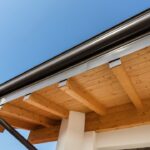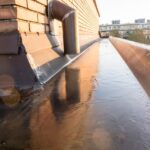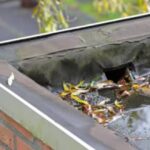How long does a roof inspection take? is a common question among homeowners eager to ensure the safety and longevity of their homes. With the complexities of different roof types and the critical nature of regular maintenance, it’s important to understand the nuances of this process. As a homeowner, knowing the duration can help you schedule your time effectively and ensure that you utilize professional roofing services optimally. It’s here that we provide big insights into the timeline and aspects of a roof inspection.

The Essence of Roof Inspections
Roof inspections are a critical aspect of home maintenance. They help in identifying potential issues that could lead to significant damage if neglected. A professional roof inspection aims to provide a thorough understanding of the roof’s condition. Approved by building standards, these inspections cover a range of elements from shingles to gutters.
Factors Influencing Inspection Duration
The time taken for a thorough inspection can vary based on several factors. The complexity of the roof design, its size, and the materials used play pivotal roles. Additionally, the age of the roof and any existing damages can extend the inspection time. Some roof designs, as mentioned in this guide, are more complex to inspect.
Roof Size and Shape
Larger roofs with intricate designs may require additional inspection time. For instance, a roof with multiple gables will naturally take longer to inspect than a simple flat roof.
Materials Used
The material of the roof can also influence the inspection timeline. For example, a EPDM roof might be quicker to inspect compared to a tiled roof due to its seamless nature.
Detailed Steps in a Roof Inspection
The roof inspection process is detailed to ensure no element is overlooked. Here are the primary steps involved:
Exterior Visual Inspection
Inspectors start with a visual assessment of the roof, identifying visible damages or problems. This initial step helps prioritize areas for a more thorough check.
Structural Inspection
This involves checking the roofs structural integrity. Elements like the roofs angle, soffit, fascia, and gutter system are inspected for proper installation and operation.
Interior Inspection
Inspectors survey the attic and ceilings for signs of water damage, mold, or poor ventilation that could affect the roof’s condition.
Material Inspection
This covers the condition of shingles, flashing, and other material-related components. Worn or damaged materials are noted for repair.
Typical Duration for Roof Inspections
While the question how long does a roof inspection take? might seem straightforward, the answer varies. On average, a roof inspection could take anywhere from 45 minutes to several hours, depending on the factors outlined. For example, a simple flat roof may require less time, while a complex tiled roof might take longer.
Professional Insights
Professionals suggest that maintaining a regular inspection schedule can significantly decrease the time taken, as it prevents cumulative damage. For insights on choosing the right roofing material, you can refer to our comprehensive guide.
Preparing for a Roof Inspection
Homeowners can take certain steps to ensure the inspection process goes smoothly and efficiently.
Clear Surroundings
Ensure that the area around the roof is clear of debris or obstacles that might hinder the inspectors access.
Provide Roof History
Offering details on the roofs age, material, and past issues can significantly help the inspector identify prevalent issues.
The Benefits of Regular Roof Inspections
Regular roof inspections contribute significantly to the longevity and safety of your home. They help detect early signs of damage and can save costs in the long run by preventing extensive repairs.
For more information about roofing costs, consider visiting this external source. Understanding these expenses can help plan for future maintenance or replacements.
Conclusion: Embrace the Benefits of Timely Inspections
In conclusion, understanding how long a roof inspection takes is crucial for effective home maintenance. It’s important for homeowners to schedule regular inspections, prepare adequately, and engage qualified professionals for the best outcomes. With the right approach, the benefits of these inspections will be tremendous, keeping your home safe and secure.

Frequently Asked Questions
Q1: What happens if a roof issue is found during inspection?
Upon discovering an issue, the inspector will provide a detailed report with recommended actions, which can range from minor repairs to a complete replacement.
Q2: How often should a roof be inspected?
Experts recommend a professional inspection at least once a year, especially before severe weather seasons. This ensures any minor issues are addressed promptly.
Q3: Can homeowners conduct roof inspections themselves?
While homeowners can conduct basic visual checks, professional inspections are advised for a comprehensive assessment. Professionals can identify subtle issues that may be overlooked by untrained individuals.
This article contains affiliate links. We may earn a commission at no extra cost to you.








